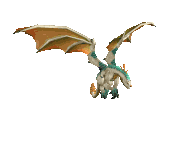Post by QueenFoxy on Feb 19, 2019 9:36:39 GMT -6
The Leatherback Turtle is the 4th largest reptile in the world - heavier than some rhinos!

Amazing Facts About the Leatherback Sea Turtle
One female Leatherback Turtle has been recorded with satellite technology to have swum 12,000 miles (19,000 km) from Indonesia to Oregon.
This enormous turtle is the 4th largest reptile in the world, lighter only than some crocodiles. In 1988 on the west coast of Wales, one Leatherback Turtle measured around
2m in size and weighed in at a colossal 900kg! This is heavier than some Sumatran Rhinos!
The Leatherback Turtle is the only turtle not to have a hard shell. Instead, as their name suggests, they have a thin, tough, leathery skin with 7 distinct ridges that travel the length of their shell. This allows the turtle the ability to dive down to 1,200m (4000ft), which is deeper than any other turtle species. Only Sperm Whales, Elephant
Seals and Beaked Whales can outdo the Leatherback when it comes to deep sea diving!
They can stay under the water for up to 85 minutes.
Their flippers have no claws.
In the middle of the night, every 2-3 years, like other turtles, female Leatherback Turtles come ashore to lay eggs. They will dig a hole in the sand and lay approximately 80 eggs. To make detection by predators difficult they then re-cover the nest with sand before re-entering the sea leaving the eggs to hatch.
The eggs are around the size of billiard balls and take about 65 days to hatch.
The sex of the hatchlings (baby turtles), depends on the temperature of the nest. For a mixture of male and female, the nest temperature must be approximately 29.5 degrees C (85.1 degrees Fahrenheit). A higher temperature will result in more females, and a lower temperature means more males.
Female turtles will return ashore to the exact same nesting spot from where they hatched, whereas male turtles spend their entire lives at sea.
It is unknown how long a leatherback can live for, but estimates suggest between 40-45 years.
Jellyfish are a Leatherbacks meal of choice, but they also eat sea urchins, squid, fish, and floating seaweed. They eat twice their body weight every day.
Unfortunately, plastic bags and other plastic waste can be mistaken for jellyfish. When eaten they can cause intestinal blockage which can be deadly.
Many populations are on the brink of extinction as a result of pollution and the rapid rate at which eggs are poached for consumption in many Asian countries. As a result of these pressures, it’s estimated that out of 1000 hatchlings only one single Leatherback will survive to adulthood.

Amazing Facts About the Leatherback Sea Turtle
The Leatherback Sea Turtle, also known as the lute turtle or the leathery turtle, is the largest sea turtle and the most migratory. It swims around the globe, crossing the
Atlantic and Pacific Ocean and traveling as far north as Alaska and Norway and as far south as the most southern point of New Zealand, South America and South Africa.
Atlantic and Pacific Ocean and traveling as far north as Alaska and Norway and as far south as the most southern point of New Zealand, South America and South Africa.
One female Leatherback Turtle has been recorded with satellite technology to have swum 12,000 miles (19,000 km) from Indonesia to Oregon.
This enormous turtle is the 4th largest reptile in the world, lighter only than some crocodiles. In 1988 on the west coast of Wales, one Leatherback Turtle measured around
2m in size and weighed in at a colossal 900kg! This is heavier than some Sumatran Rhinos!
The Leatherback Turtle is the only turtle not to have a hard shell. Instead, as their name suggests, they have a thin, tough, leathery skin with 7 distinct ridges that travel the length of their shell. This allows the turtle the ability to dive down to 1,200m (4000ft), which is deeper than any other turtle species. Only Sperm Whales, Elephant
Seals and Beaked Whales can outdo the Leatherback when it comes to deep sea diving!
They can stay under the water for up to 85 minutes.
Their flippers have no claws.
In the middle of the night, every 2-3 years, like other turtles, female Leatherback Turtles come ashore to lay eggs. They will dig a hole in the sand and lay approximately 80 eggs. To make detection by predators difficult they then re-cover the nest with sand before re-entering the sea leaving the eggs to hatch.
The eggs are around the size of billiard balls and take about 65 days to hatch.
The sex of the hatchlings (baby turtles), depends on the temperature of the nest. For a mixture of male and female, the nest temperature must be approximately 29.5 degrees C (85.1 degrees Fahrenheit). A higher temperature will result in more females, and a lower temperature means more males.
Female turtles will return ashore to the exact same nesting spot from where they hatched, whereas male turtles spend their entire lives at sea.
It is unknown how long a leatherback can live for, but estimates suggest between 40-45 years.
Jellyfish are a Leatherbacks meal of choice, but they also eat sea urchins, squid, fish, and floating seaweed. They eat twice their body weight every day.
Unfortunately, plastic bags and other plastic waste can be mistaken for jellyfish. When eaten they can cause intestinal blockage which can be deadly.
Many populations are on the brink of extinction as a result of pollution and the rapid rate at which eggs are poached for consumption in many Asian countries. As a result of these pressures, it’s estimated that out of 1000 hatchlings only one single Leatherback will survive to adulthood.





